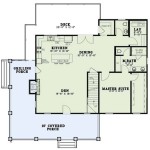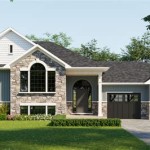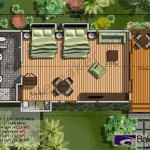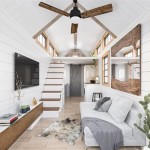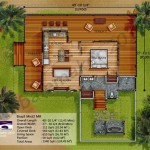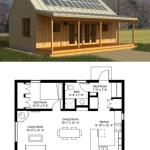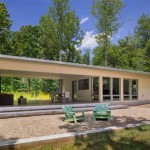Linea Weatherboard House Plans: A Comprehensive Guide
Linea weatherboard, a popular choice for exterior cladding, offers a contemporary aesthetic combined with durable performance. Its clean, horizontal lines create visual interest and provide a distinctive look for residential buildings. This article provides a detailed exploration of Linea weatherboard house plans, encompassing design considerations, material properties, construction techniques, and relevant planning regulations.
Understanding Linea Weatherboard Characteristics
Linea weatherboard is typically manufactured from fiber cement, a composite material comprising cement, cellulose fibers, and other additives. This composition imparts several desirable properties. Firstly, fiber cement exhibits inherent fire resistance, minimizing the risk of fire spread and enhancing occupant safety. Secondly, it is resistant to rot, decay, and insect infestation, ensuring long-term structural integrity and minimizing maintenance requirements. Thirdly, fiber cement is dimensionally stable, meaning it is less prone to expansion and contraction due to changes in temperature and humidity. This stability reduces the likelihood of gaps or warping, maintaining an aesthetically pleasing appearance over time.
Furthermore, Linea weatherboard is relatively easy to install, contributing to reduced construction time and costs. It can be cut and fastened using standard woodworking tools, and the interlocking profile simplifies alignment and attachment. The material is also available in a range of colors and textures, allowing for customization to suit various architectural styles and design preferences.
The dimensions of Linea weatherboard typically vary depending on the manufacturer. Common widths range from 150mm to 300mm, while lengths can extend up to 4.2 meters. The thickness of the board also influences its structural performance and aesthetic appeal. Thicker boards generally offer increased rigidity and a more pronounced shadow line.
When selecting Linea weatherboard, it is crucial to consider the specific environmental conditions prevailing in the building's location. In areas with high wind loads or seismic activity, it may be necessary to specify thicker boards or incorporate additional reinforcement measures to ensure structural stability.
Designing with Linea Weatherboard: Key Considerations
Linea weatherboard offers considerable design flexibility, enabling architects and designers to create visually appealing and functional building facades. Several key considerations should be taken into account during the design process.
Firstly, the orientation of the Linea weatherboard significantly affects the visual impact of the building. Horizontal installation, the most common approach, emphasizes the width of the structure and creates a sense of groundedness. Vertical installation, while less prevalent, can accentuate the height of the building and impart a more modern aesthetic. Diagonal installation offers a unique and dynamic appearance but requires careful planning and execution to ensure proper alignment and weather resistance.
Secondly, the spacing between the weatherboards, known as the reveal, influences the shadow line and overall texture of the facade. A larger reveal creates a more pronounced shadow line, adding depth and visual interest. A smaller reveal results in a smoother, more subtle appearance. The choice of reveal should be carefully considered in relation to the overall architectural style and the desired aesthetic effect.
Thirdly, the color and texture of the Linea weatherboard play a crucial role in defining the building's character. Light-colored weatherboards reflect more sunlight, helping to keep the building cooler in hot climates. Dark-colored weatherboards absorb more sunlight, potentially increasing the building's heating load. The texture of the weatherboard can also affect its visual appearance. Smooth textures create a clean and modern aesthetic, while textured surfaces can add warmth and character.
Fourthly, window and door placement should be carefully integrated with the Linea weatherboard cladding. Proper flashing and sealing around openings are essential to prevent water ingress and maintain the building's weather tightness. The size and proportions of windows and doors should be compatible with the overall design aesthetic and the scale of the Linea weatherboard.
Fifthly, the integration of other building materials, such as brick, stone, or metal, can enhance the visual interest and architectural complexity of the building. Strategic use of contrasting materials can create focal points and highlight specific architectural features. However, it is crucial to ensure that the different materials are compatible in terms of color, texture, and performance characteristics.
Finally, consider the long-term maintenance requirements of the Linea weatherboard cladding. While fiber cement is generally low-maintenance, it may require periodic cleaning to remove dirt, grime, and algae growth. The choice of paint or coating can also affect the durability and aesthetic appearance of the cladding over time.
Technical Aspects of Linea Weatherboard Installation
Proper installation is crucial for ensuring the long-term performance and aesthetic appeal of Linea weatherboard cladding. Several technical aspects must be carefully considered during the installation process.
Firstly, the building's framing must be structurally sound and properly aligned to provide a stable base for the weatherboard cladding. Any imperfections in the framing can be amplified by the weatherboard, resulting in an uneven or unsightly appearance. The framing should also be treated to protect against rot and insect infestation.
Secondly, a suitable weather-resistant barrier (WRB) should be installed over the framing to protect against water penetration. The WRB should be properly lapped and sealed to create a continuous waterproof membrane. This membrane prevents moisture from entering the wall cavity and causing damage to the framing and insulation.
Thirdly, the Linea weatherboard should be properly fastened to the framing using corrosion-resistant fasteners. The spacing and type of fasteners should be in accordance with the manufacturer's recommendations and local building codes. Over-driving or under-driving the fasteners can compromise the integrity of the cladding.
Fourthly, proper flashing should be installed around windows, doors, and other openings to prevent water ingress. The flashing should be integrated with the WRB to create a continuous waterproof barrier. The choice of flashing material should be compatible with the Linea weatherboard and the surrounding building materials.
Fifthly, expansion joints should be incorporated into the cladding at regular intervals to accommodate thermal expansion and contraction. The spacing of expansion joints should be in accordance with the manufacturer's recommendations and local building codes. Failure to provide adequate expansion joints can result in cracking or buckling of the weatherboard.
Sixthly, the Linea weatherboard should be properly painted or coated to protect it from the elements and enhance its aesthetic appearance. The choice of paint or coating should be compatible with fiber cement and should be applied in accordance with the manufacturer's instructions. Regular maintenance of the paint or coating can extend the lifespan of the cladding.
Seventhly, ensure proper ventilation behind the Linea weatherboard. Allowing airflow behind the cladding helps to prevent moisture buildup and potential damage. This can be achieved through a cavity system or other ventilation strategies.
Building Codes and Regulations
Building codes and regulations governing the use of Linea weatherboard vary depending on the location. It is essential to consult with local building officials or a qualified architect to ensure that the proposed design complies with all applicable requirements.
Some common building code requirements related to Linea weatherboard include fire resistance, wind load resistance, and seismic resistance. The building code may also specify requirements for the installation of flashing, weather-resistant barriers, and expansion joints.
In some areas, there may be design guidelines that regulate the appearance of buildings, including the type of cladding that can be used. These guidelines may be intended to maintain the architectural character of the neighborhood or to promote sustainable building practices.
Obtaining the necessary building permits and approvals is essential before commencing any construction work. Failure to comply with building codes and regulations can result in costly delays and penalties.
Linea weatherboard house plans necessitate meticulous planning and adherence to technical guidelines. Focusing on material properties, design considerations, installation techniques, and regulatory compliance ensures a durable, visually appealing, and structurally sound building.
Linea Weatherboard Clad Holiday Home Fits Naturally Into Tasmanian Beach Community Architecture Design

Linea Weatherboard Home Contemporary Exterior Christchurch By Build 7 Houzz Au

Linea Weatherboard House Cladding Bungalow Exterior

Elevate Your Home With James Hardie Linea Weatherboards

Linea Weatherboard Home Contemporary Exterior Christchurch By Build 7 Houzz Au

Linea Weatherboard Rural Idyll Homeowner Design Series
Linea Weatherboards Transform Coastal Home Into Stunning Waterfront Property Architecture Design

The Transformation Of Bungalow With Linea Weatherboard

Linea Weatherboard House Exterior Colors Cladding

Simple Effective Weatherboard Home By James Hardie Linea Traditional Exteriors Bungalow Exterior House

